Since 2018, an increasing number of importers have been looking for alternatives to China, with a desire to either replace or supplement their Chinese manufacturers.
The U.S.-China trade war has put billions of dollars worth of tariffs on imports from the country and the COVID-19 epidemic has brought production to a grinding halt. These events, along with a trend of rising wages, have made many importers realize that a more diverse supply chain can provide real benefits.
We’ve had countless discussions with our customers about the alternatives they are considering and the moves they have already made. One country that often comes up in these discussions is Cambodia.
Interest in Cambodia stems from its close proximity to China as well as its low labor costs, which are among the lowest in Southeast Asia. Making the move to Cambodia, however, is not always easy.
So, in this article, we talk about the product categories the country specializes in, how it compares to China, and why shifting production to Cambodia poses a big challenge for importers.
First, we will talk about product categories.
What are Cambodia’s Major Exports?
When you are thinking about where to look for manufacturers, it is important to consider the product categories that each country specializes in.
Cambodia has many different types of factories, to be sure, but it has more expertise in a few specific areas.
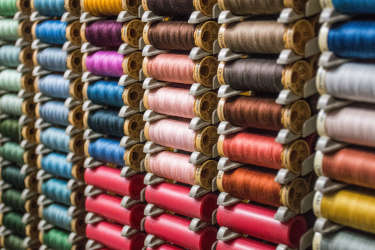
Textiles make up a large percentage of Cambodia’s exports
So, what does Cambodia manufacture?
In 2017, the country’s top 5 exports were:
#1 Knit or crochet clothing & accessories – $8.4 billion
#2 Clothing & accessories (not knit or crochet) – $3.8 billion
#3 Footwear – $2 billion
#4 Leather/animal gut articles – $862.9 million
#5 Electrical machinery & equipment – $514.1 million
It is important to note that Cambodia has a very heavy specialization in garments and footwear – much more so than any other country in Southeast Asia.
You’ll find no shortage of garment factories making knit sweaters, women’s suits, men’s suits, t-shirts, and baby garments. Leather footwear, textile footwear, and rubber footwear are also not hard to come by.
In fact, the footwear, headwear, and textile industries make up about about 82% of the country’s total exports. These labor-intensive products are a good fit for Cambodia’s low labor costs, which is why they have a real competitive advantage in this area.
It is also worth noting that we have customers who have shifted production to Cambodia in other categories, including wood and furniture. However, these factories may be more difficult to find.
Keep in mind, too, that Cambodia’s infrastructure and labor force are very different from China’s.
Let’s talk about some of the key differences between these two countries.
How Does Cambodia Compare to China as an Exporter?
The first thing that you have to understand about Cambodia is that it’s tiny.
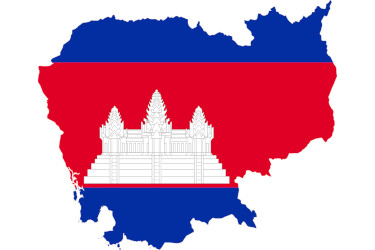
Cambodia has a smaller population than its neighbors, Thailand and Vietnam
In total, Cambodia has about 16 million people, which is only slightly larger than the Chinese city of Shenzhen. That means the workforce is small and the number of factories is small as well.
In 2018, Cambodia exported about $19.4 billion worth of goods. For comparison, Vietnam exported $290.4 billion – almost 15x as much, and China exported around $2.5 trillion.
It should be noted, however, that in recent years, Cambodia has seen rapid GDP growth of around 7% per year, and, between 2014 and 2018, its exports increased by 182%!
That’s a larger increase than any other country in the region.
Cambodia’s workforce is lower-skilled than China’s, its transport infrastructure is less developed, and it’s also not as easy to do business there.
However, labor costs are significantly lower, with a minimum wage of $190 per month in 2020. This key advantage has surely contributed to the rapid growth of its garment industry.
But if you want to move production to Cambodia, there is something else you need to understand.
The Biggest Challenge When Switching to Cambodia
As many importers have discovered in the last year or so, moving production away from China is not as easy as it might look.

Diversifying your supply chain is a marathon, not a sprint
It can take time to find a good supplier and go through the vetting process, but Cambodia, similar to Vietnam, has many factories that are already at capacity and cannot take on new customers so easily.
It is a very small country and its workforce can only fill so many factories.
We don’t say this to discourage you, but to provide you with a dash of realism, and to help you realize that, if you want to diversify your supply chain, the process will be a marathon and not a sprint.
While the opportunities in Cambodia are somewhat limited, they do exist.
If you are resourceful, you may be able to find a factory that serves several large clients and is looking to diversify their business.
Keep in mind, though, that when starting a relationship with a new supplier, it is important to fully qualify them, and that means you should consider conducting a factory audit.
This will help you ensure that they have an effective quality management system in place, have the capacity to handle your orders, and are operating in line with labor laws and other requirements.
If you are planning to work with a new factory and want to learn more about how to assess their capabilities, we recommend downloading the following guide.
Free Guide
How to Prepare for a Factory Audit
A factory audit helps you assess a supplier's systems, capacity, workplace environment, or capabilities to ensure they meet your requirements as a buyer.
But which type of audit should you conduct, and which points should you cover on your checklist? In this free guide, you'll learn how to run an effective supplier assessment.


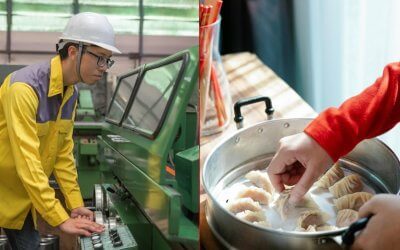
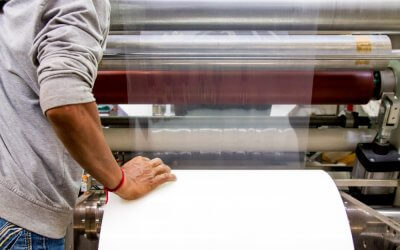
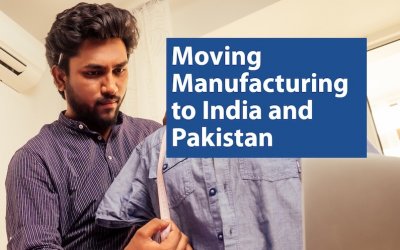
0 Comments